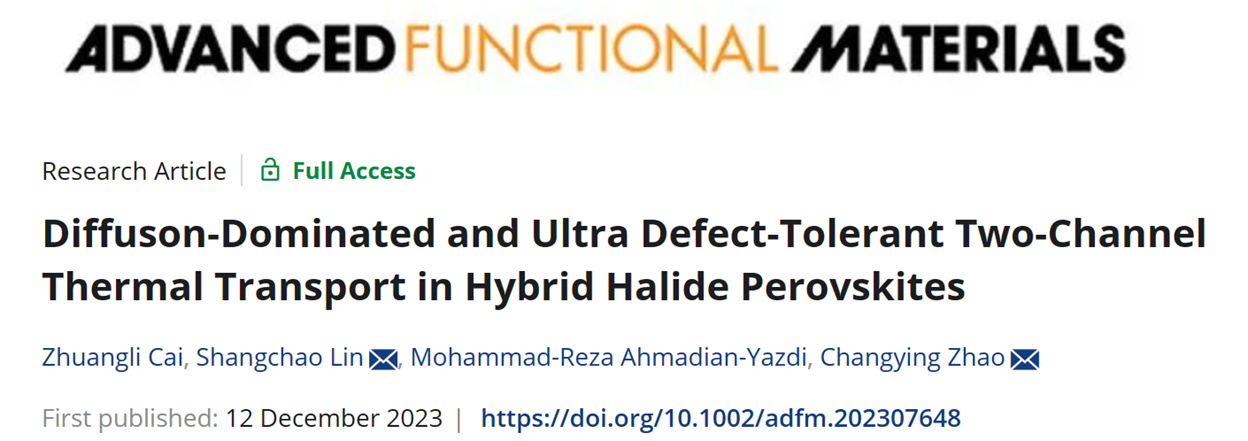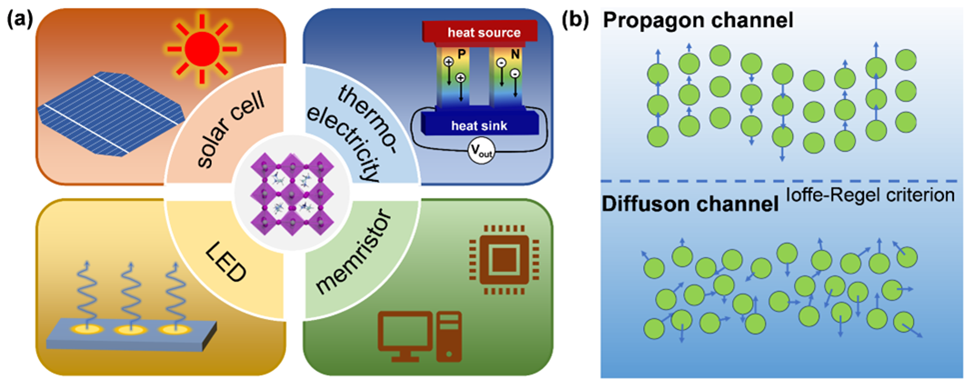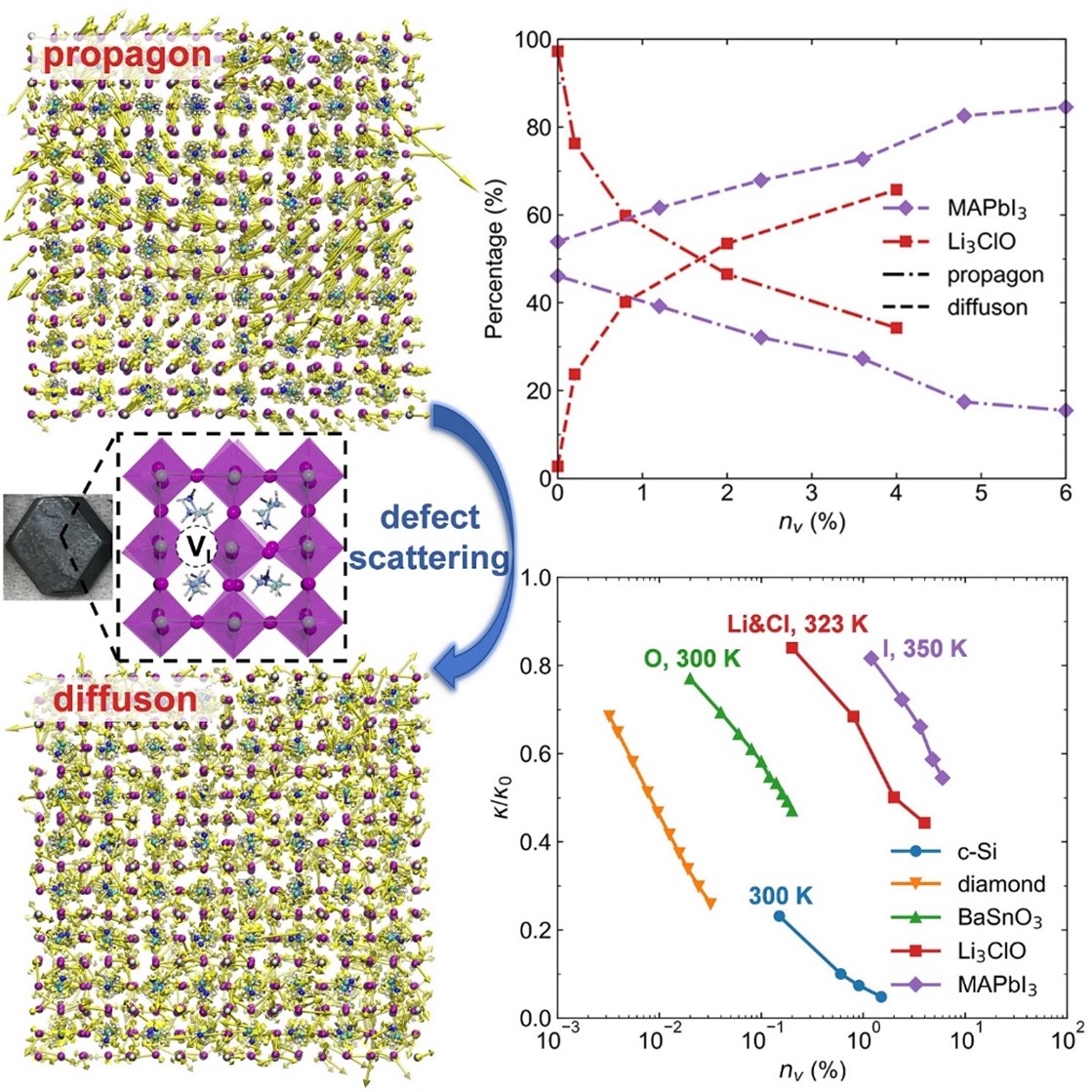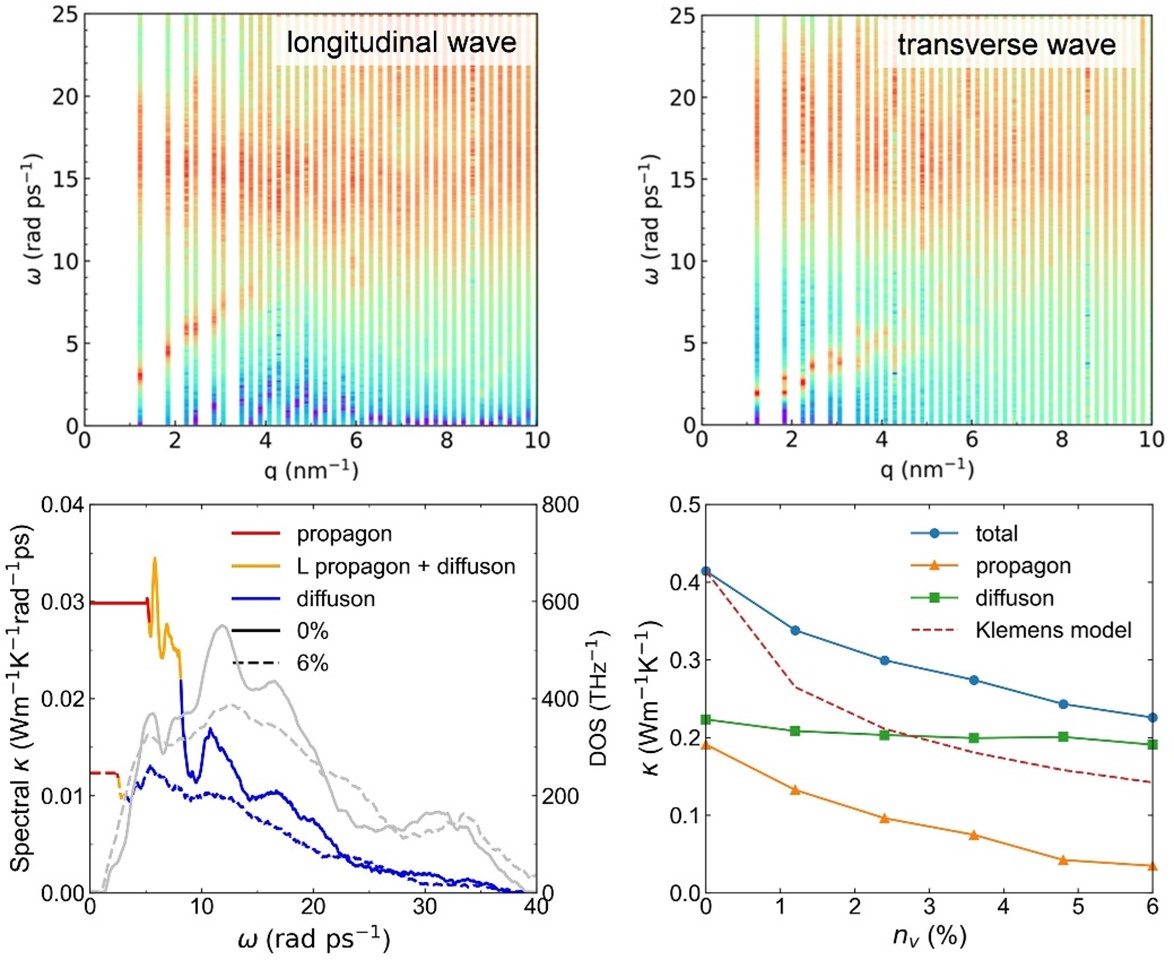
News

News
Recently, Professor Shangchao Lin’s group at the Institute of Engineering Thermophysics from School of Mechanical Engineering published a paper, entitled Diffuson-Dominated and Ultra Defect-Tolerant Two-Channel Thermal Transport in Hybrid Halide Perovskite, in Advanced Functional Materials, a top international journal in functional materials. The paper uses the state-of-the-art Wigner transport theory, molecular dynamics simulations, and experimental single crystal synthesis to study thermal transport in hybrid halide perovskites. The work highlights the new paradigm for understanding thermal transport in material systems with disorders, beyond the classic phonon-gas theory. This paper is first co-authored by Zhuangli Cai, a PhD candidate, and Prof. Shangchao Lin. Corresponding authors include Prof. Shangchao Lin and Prof. Changying Zhao.


Organic-inorganic hybrid halide perovskites, such as the prototypical CH3NH3PbI3 (MAPbI3), have attracted intensive attention as light absorbers in solar cells, emitters in light emitting diodes (LEDs), optical/radiation detectors, and thermoelectric materials owing to solution-processability and high performance. Thermal transport in hybrid halide perovskites play a crucial role in the thermal management of these devices, and largely affect other energy carriers, such as excitons, polarons, electrons and holes for their opto- and thermoelectric applications. Very recent studies have discovered both phononic and non-phononic characteristics in the thermal transport of the high-temperature pseudo-cubic phase of MAPbI3, due to the disordering of rotational MA+ cations and I− anions.

The impact of iodine vacancy point defects on the multi-channel thermal transport (as propagons or diffusons) is investigated using theoretical calculations and experimental validations. Iodine vacancies suppress the thermal transport in the propagon channel significantly, but less in the diffuson channel. The thermal conductivity reduction in diffuson channel is mainly attributed to the declined vibrational density of states due to missing iodine atoms. Moreover, low-frequency diffusons transformed from propagons further compensate the reduction of thermal conductivity in the diffuson channel, resulting in a dominant contribution to the total thermal conductivity, which is 55 to 85% for 0% to 6% vacancy concentration. MAPbI3 also show ultra-defect-tolerant diffusonic thermal transport, 1~2 orders of magnitude lower than diamond in the defect sensitivity factor. This work shows both scientific insights into the thermal transport mechanism in complex material systems with disorder, and technological significance on halide perovskites for solar cell, light-emitting diode, thermoelectric, and memristor applications.

Professor Shangchao Lin’s group is dedicated to study thermoelectric conversion materials, energy storage materials, and mechano-thermo-opto-electrical coupling effects in energy materials. He has recently published original research articles in top international journals, such as Nature Communications, Science Advances, and Advanced Functional Material, as first or corresponding author. This work is supported by the National Natural Science Foundation of China (NSFC) and the Thousand Talent Young Scholar Program of China.
Paper Link: https://onlinelibrary.wiley.com/doi/10.1002/adfm.202307648

Shanghai Jiao Tong University
Address: 800 Dongchuan Road, Shanghai
200240